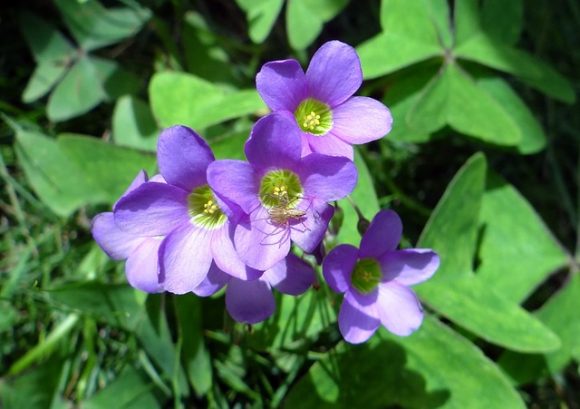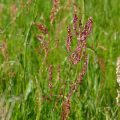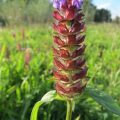- The Miraculous Shiny Bush Plant - January 18, 2021
- Colorful, Edible and Medicinal Celosia - January 10, 2021
- Radish, a Nutritional Power House - December 19, 2020
Oxalis corniculata, commonly known as creeping woodsorrel, sourgrass, or sleeping beauty, is a delicate, perennial, low-growing, flowering plant in the oxalis genus. It looks similar to the common yellow wood sorrel or oxalis stricta.
Creeping woodsorrel is native to subtropical and temperate regions of Europe, Asia, and North America. The plant, also known as clover sorrel, is considered a weed in crop fields, gardens, and lawns.
Clover sorrel thrives in fertile, moist, well-drained soils. It has smooth, compound leaves, divided into heart-shaped leaflets. The leaves are normally green on the upper side and dark-red or purplish on the underside. It folds the leaves at dusk and opens them again at dawn. The sleeping beauty brings forth yellow flowers with 5 petals from May to October. Flowers have an erect pistil and ten stamens.
All parts of the creeping wood sorrel contain vitamin C and oxalic acid. The plant is rich in calcium, fat, proteins, iron, phosphorus, beta, and flavonoids as well as volatile oils. It is also high in essential fatty acids such as oleic acid, linoleic acid, stearic acid, linolenic acid, and palmitic acid.
In a 2016 study published in the Journal of Pharmaceutical, Biological and Chemical Sciences, extracts from the sleeping beauty were found to have antihyperglycaemic activity. The study involving hyperglycaemic rats found that the rats experienced a reduction in blood glucose when fed with single and double doses of creeping wood sorrel extracts. In glucose loaded animals, a reduction in blood sugar level was observed within an hour of administering the creeping wood sorrel extracts.
Continuous administration of the creeping woodsorrel for 14 days led to a noticeable reduction of serum cholesterol, LDL, triglycerides and VLDL levels in the rats. There was also a remarkable increase in HDL and protein levels.
The researchers realized that the sleeping beauty plant had the ability to inhibit the absorption and digestion of glucose via the intestines. Based on these findings, they concluded that creeping wood sorrel had the potential of becoming the new source of a highly effective oral antihyperglycaemic drug.
Apart from being a potential treatment for diabetes, clover sorrel is also edible. This explains why the plant is fondly referred to as sourgrass due to the presence of oxalic acid, giving it a sour taste. Oxalic acid is a common compound found in many edible vegetables including spinach. In spite of being highly edible, the creeping wood sorrel is toxic when consumed in large quantities.
While research is ongoing to find out whether the creeping woodsorrel is as effective in treating diabetes in humans as it was in rats, this plant seems to hold a lot of potential in assisting diabetics to take off the edge from this condition.





